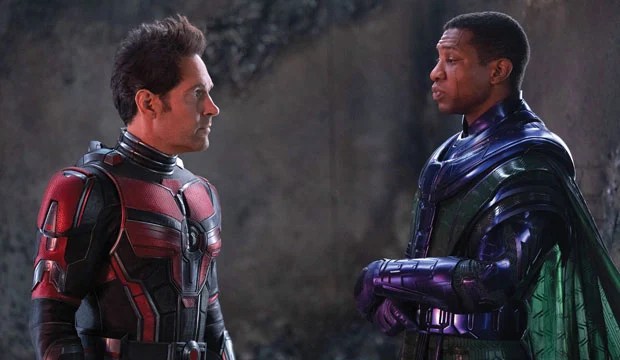For the past few years, Hollywood has largely relied on previously established franchises and IP to get audiences in theaters and turn a profit. This is especially true in the summer blockbuster season and perhaps even more so in a post-pandemic world. 2023 has been no exception, with titles like Guardians of the Galaxy Vol. 3, Fast X, The Little Mermaid, Spider-Man: Across the Spider-Verse and Indiana Jones and the Dial of Destiny already having hit theaters. Some with more success than others.
It’s no secret to the industry — and audiences alike — that some of Hollywood’s biggest blockbuster titles have recently flopped in a crowded movie season. The Ezra Miller-led The Flash managed to open to a measly $55 million domestically (less than 2022 Black Adam’s own $67 million). Even worse, it managed to drop 72.5% in its second weekend, clearly indicating that audiences just didn’t care a whole lot about the new DC title: especially in the wake of the recent controversy surrounding Miller.
Most recently, Indiana Jones and the Dial of Destiny paled in comparison to past installments of the franchise with a $60 million domestic opening weekend. With 15 years having passed since the lukewarmly-received Kingdom of the Crystal Skull (2008), The Dial of Destiny’s own decent but not great reviews certainly didn’t exude much confidence. In fact, the film currently holds the lowest Rotten Tomatoes critic score of the franchise at 69%.

That’s not to say that big franchise movies can’t be popular and loved among audiences. Just look at the recent success behind Spider-Man: Across the Spider-Verse and Guardians of the Galaxy Vol. 3., for example. Or if we go back a little further, Avatar: The Way of Water (2022) and Top Gun: Maverick (2022) made $2.3 billion and $1.5 billion worldwide, respectively. Moviegoers still have a desire to watch spectacles where they were meant to be seen: on the big screen. But tastes have clearly gotten more picky, and movies have to feel like true theater events in order to warrant increasing ticket prices, endless competition from streaming, and a shortened direct-to-video window.
Comic book franchises that were previously seen as guaranteed successes (or at least breaking even) at the box office have faltered below expectations. Earlier this year, the underperformance of Shazam! Fury of the Gods and Ant-Man and the Wasp: Quantumania spelled future trouble for the DC and Marvel brands: in large part due to less-than-stellar reviews and marketing.
Another thing this summer’s movie season has made exponentially clear is the inflated budgets that make it increasingly difficult for studios to turn profits. And the results — where all this money even goes — haven’t quite seemed to click. Criticism for poor visual effects has been thrown at expensive superhero films The Flash (production cost roughly $220 million) and Ant-Man and the Wasp: Quantumania (budget around $200 million). You’d think that studios would invest more time in these big-budget movies instead of overworking and underpaying their VFX artists to try and force the films out, but it seems so far that that’s not the case.

The post-pandemic moviegoing scene has certainly changed a lot and studios need to readjust their costs accordingly. According to a report by Variety, box office returns are currently 20% down from what they were before the pandemic. To date, only The Super Mario Bros. Movie has joined the billion dollar club in 2023. In comparison, 2019 had 9 movies cross that mark including Joker, Frozen II and Avengers: Endgame. Spending extraneous amounts of money and banking on franchise titles alone to get seats filled isn’t enough anymore. And before reviving decades-old franchises like Indiana Jones (1981-2023), studios and producers need to ask themselves why these iconic characters are returning to the big screen before forcing these cash grabs to life without purpose.
With the summer box office having faced lots of ups and downs so far, Hollywood looks to Mission: Impossible — Dead Reckoning Part One, Barbie, and Oppenheimer to stir up big numbers. The Mission: Impossible (1996-present) franchise has fared well at the box office so far (with high critical acclaim since the third installment), and the latest installment is currently projected to reach $90 million over its five-day opening weekend. And the pitch-perfect marketing push behind Barbie (pink paint anyone?) — along with the internet hype surrounding Barbenheimer double features around the world — hopefully indicates an exciting, busy few weeks ahead for moviegoers. Soon enough, we’ll see if these hotly anticipated films can bring box office numbers back to what they were pre-pandemic. Regardless, I’ll happily be seated.
Article Courtesy of Matt Minton
Feature Image via Warner Bros.

Recent Comments